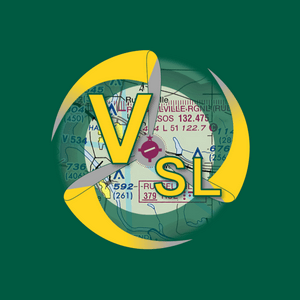Illegal Charter, Operational Control, and Protecting Your Certificate – with Attorney Edward Hadley
In this episode of the VSL Aviation Podcast, Seth sits down with aviation attorney and pilot Edward A. Hadley of AeroLegal Advocates to talk about the legal traps commercial pilots face—especially around illegal charter, operational control, and holding out. Edward walks through what actually happens when the FAA starts looking at you or your operation: from that dreaded "call the tower" instruction or ramp check, through the investigation phase, to 709 rides, legal enforcement, ALJ hearings, and NTSB appeals. He explains why you should get an aviation lawyer involved early and why on-the-record statements can come back to haunt you. For commercial pilots flying Part 91 "pilot services," Seth and Edward dig into: What operational control really means and why it often overlaps—but isn't identical to—PIC authority Dry vs. wet leases, 91.501, and how the NBAA small aircraft exemption fits into all of this How an owner or manager can unknowingly create an illegal transportation package (plane + pilot) even when "everyone at the airport does it this way" Why "goodwill" and time-building can still count as compensation, even if no money changes hands How holding out actually works, and why a business card or "I'm a commercial pilot" post is not the problem—the transportation package is They also cover risk management from the pilot's side: Using the AOPA Legal Services Plan as "legal insurance" How PRIA and your employment history interact with being a whistleblower Red flags with Part 135 operators (falsified records, paper crews, pressure flights) and when it's time to walk away Practical advice on documenting concerns, using internal reporting channels, and knowing which hills are worth dying on If you're a commercial pilot, aspiring commercial pilot, or flying Part 91 for a business owner, this episode will help you ask better questions, spot bad structures, and protect your certificate and livelihood. Chapters: 00:00 Introduction to Aviation Law and Pilot Regulations 02:48 Understanding FAA Investigations and Pilot Violations 05:22 Legal Resources for Pilots 08:24 Operational Control in Aviation 11:02 The Importance of Operational Control for Commercial Pilots 13:58 Navigating Dry and Wet Leases 16:44 Understanding Holding Out in Aviation 19:38 Compensation and Goodwill in Aviation Operations 22:07 NTSB Cases and Legal Precedents 24:48 Business Aircraft and Goodwill 39:03 Navigating the NBAA Exemption 40:59 Understanding Entry-Level Aircraft and Pilot Experience 43:52 Compliance and the Role of the FSDO 46:22 Whistleblower Protections in Aviation 49:10 The Importance of Legal Consultation for Pilots 51:39 The PREA and Reporting Obligations for Pilots 54:41 Credibility and Ethical Considerations in Aviation 57:30 Resources for Pilots: AOPA and NBAA AOPA Legal Services Plan https://pilot-protection-services.aopa.org/ NBAA and the small aircraft exemption https://nbaa.org/flight-department-administration/aircraft-operating-ownership-options/nbaas-small-aircraft-exemption/ AC 91-37B https://www.faa.gov/documentLibrary/media/Advisory_Circular/AC_91-37B.pdf AC 61-142 https://www.faa.gov/documentLibrary/media/Advisory_Circular/AC_61-142.pdf AC 120-116 https://www.faa.gov/documentlibrary/media/advisory_circular/ac_120-116.pdf NTSB Blakely V Murray https://www.ntsb.gov/legal/alj/OnODocuments/Aviation/5061.pdf NTSB Babbitt V Wallace https://www.ntsb.gov/legal/alj/OnODocuments/Aviation/5461.PDF AeroLegal Advocates / contact info for Edward Hadley https://www.aerolegaladvocates.com/


